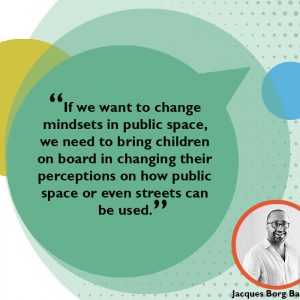Activities
Networks of Green Open Space – Webinar Episode #3
How can Community Initiatives for Green Open Spaces be Supported?
The third webinar of the series Networks of Green Open Space was held on the 27th April 2022. Moderated by Sarah Scheiber, the webinar brought together speakers from various fields related to the built environment, specifically people who have organised community initiatives in green open spaces in Malta. Throughout the webinar it was emphasised that the many branches of the built environment profession can feed into the knowledge base that is required to envision and create better spaces. When speaking of green open spaces, such interdisciplinarity is essential in order to meet the needs of all potential users of such spaces. The complexity that designers encounter in the process did in fact inspire the webinar and the topics that were discussed.
For the first time in the webinar series, a guest speaker who practices beyond Malta’s shores was invited. Giulia Sicignano was a leader in the project ‘Piazze Aperte’, which consisted of a series of tactical interventions in Milan. Since the interventions were cheap and fast, with virtually no cost to the locality and little long term commitment, there was early buy-in to the idea. This was however not an immediately obvious outcome, with some people needing to experience the interventions and thus the benefits that ensued. Giulia also cited several challenges that the organisers faced over the course of the project, chiefly amongst which was the maintenance required to upkeep the tactical interventions; managed through the use of community maintenance techniques.
A similar initiative that was held in Malta on a smaller scale was ‘Safe Routes to School’, described by Camille Bon from the Project Aegle Foundation. In this project, the organisers had to balance the visibility of the design of a series of tactical signs to help children walk to school, with the overall impact on the urban environment. She echoed Giulia in saying that there is a reticence to simply try a reversible intervention, thus fostering a sense of fear of the unknown when encountering something new. With tactical interventions however, their scope is indeed to test the applicability of the concept and their acceptance by the community.
Speaking of pedestrianisation of spaces and the uptake of parking spaces for developing open spaces, it was mentioned that the reallocation of space was a long process that required continuous and incremental community buy-in. Thus, spaces close to schools for example, are prime areas for implementing such tactical interventions, considering how such spaces can support intergenerational needs over the entire course of the day. Bryan Magro, delved into how the Salesians of Don Bosco in Malta developed the toloka method for enabling a community to create something together for each other and Zoe Jay Fletcher, an Environment Manager at the Port Region, spoke of how important it is to empower communities to take ownership of local projects, which then become inherently self-sustaining.
Following upon this, the issues related to how Local Councils deal with space reallocation were debated. Taking a workshop in Siggiewi as an example, Jacques Borg Barthet, director of practice at AP Valletta, mentioned people’s reactions to their conversion of a parking space into a small public open space for a day. He emphasised how people are reluctant to use public spaces since they feel out of place or even threatened by the ubiquity of the car in such spaces. In this regard, both Bryan and Zoe Jay continued to speak of how essential volunteers are to the success of community projects in public space, from concept stage to implementation. This webinar did in fact highlight that having such a volunteering experience supplements people’s formal education and fosters an appreciation for nature and green open spaces in the locality within which they live. This is a form of integrated locality based planning that can be used as a vehicle to move forward in making green open spaces inclusive by design.
Watch the full episode on our youtube channel: https://www.youtube.com/watch?v=o6YKFCbMiIg






